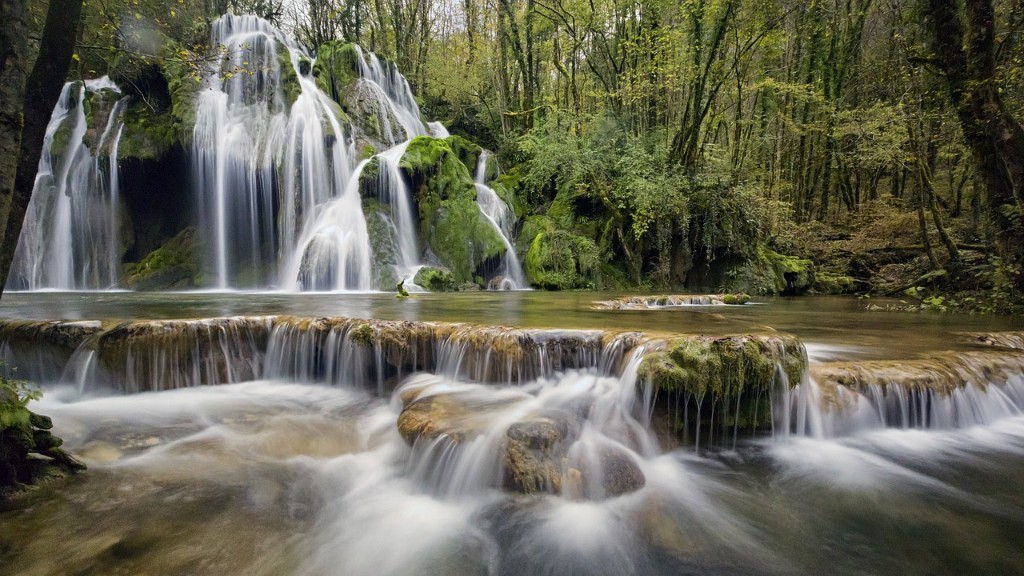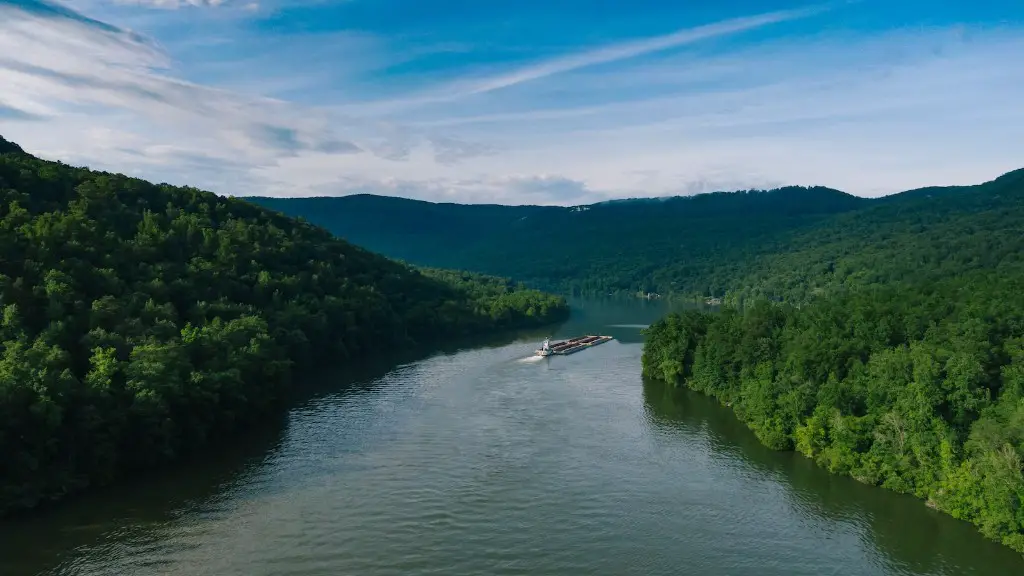The Yangtze River, located in China, is one of the longest and most important rivers in the world. Measuring 3,917 miles in length, it is the third longest river in the world and the longest river in Asia.
The Yangtze River’s origin lies in the slopes of the Tanggula Mountains.The river then winds its way south through the provinces of Qinghai, Sichuan, Yunnan, Gansu, Inner Mongolia and Shaanxi before it enters Hubei Province, where it passes through the Yangtze Gorges. The Yangtze River eventually enters the East China Sea in Shanghai.
With a population of over 60 million people, the Yangtze River basin is one of the most densely populated regions in China.The Yangtze River is a major source of drinking water for many cities along its course, and it has long been an important trade route for Chinese traders and merchants. In addition, the Yangtze River is home to various species of fish, birds and mammals.
Experts agree that the Yangtze River is of immense importance to China’s economy and is a vital part of the country’s infrastructure.The river provides an important link between the north and south of the country, enabling merchants to trade goods along its length. In addition, it is home to several hydroelectric power plants which provide the bulk of China’s electricity.
The Yangtze River is also an important ecological resource. It is home to a wide range of endangered species, such as the Yangtze sturgeon and the Chinese alligator.In recent years, the Chinese government has taken steps to protect the river’s fragile ecosystem, introducing strict regulations on pollution and development along its banks.
In spite of these measures, the Yangtze River continues to face various threats. Pollution from industry and agriculture remains an issue, and rapid urbanization along the river’s banks has destroyed the natural habitats of many species. In addition, plans to dam the Yangtze River have raised concerns about the impact on the environment and local communities.
Water Pollution
Water pollution has been a major issue in the Yangtze River. As industrial and agricultural activities have intensified over the years, the river has become increasingly contaminated. Heavy metals, organic pollutants and hazardous chemicals dumped into the Yangtze River have caused serious water pollution, leading to the deterioration of its water quality.
The severity of water pollution in the Yangtze River is particularly alarming. In 2015, the Chinese government declared that the water quality of the Yangtze River was ‘unfit for human consumption’. Fish have been found to contain high levels of pollutants and heavy metals, while bacteria levels in the river are up to ten times higher than the national standard.
In order to address the issue of water pollution in the Yangtze River, the Chinese government has taken a number of measures. These include introducing stricter regulations on water pollution, encouraging farmers to switch to organic farming practices and investing in wastewater treatment projects. However, there is still much to be done in order to make the Yangtze River safe and clean again.
Impact on Local Communities
The Yangtze River has had a significant impact on the lives of people living along its banks. Many of these communities have thrived thanks to its fertile soils, plentiful resources and trade opportunities.However, the rapid development of the region has had a negative impact on local communities.
In particular, plans to construct dams along the Yangtze River have raised serious concerns. Large-scale dam projects have led to the displacement of thousands of people, and caused significant economic and environmental damage. These projects have also altered the river’s flow, leading to drastic changes in the ecosystem.
In recent years, the Chinese government has sought to address the concerns of local communities by introducing measures to compensate those affected by the Yangtze River’s development. However, many argue that the compensation is inadequate and fails to address the long-term impacts of the projects.
Conservation Efforts
Despite the challenges, there are encouraging signs that the Yangtze River is slowly recovering.Various conservation efforts have been introduced over the past few decades. In 2008, the Three Gorges Dam project began and has since seen the water levels of the Yangtze River rise, reducing the risk of floods and increasing the river’s water supply.
In addition, various measures have been taken to protect the wildlife of the Yangtze River.The Chinese government has established the Yangtze River Nature Reserve, which protects over 2,000 species of plants and animals. In addition, a number of organizations and NGOs are working hard to preserve the river’s fragile ecosystems and restore the natural habitats of species threatened by development.
However, many argue that more needs to be done to protect the Yangtze River. The river remains under threat from pollution, overfishing and development.In order to ensure its long-term survival, it is essential that further action is taken to protect the Yangtze River and its fragile ecosystems.
Environmental Awareness
A crucial element of protecting the Yangtze River is raising greater public awareness of the threats it faces.Environmental campaigns and initiatives have been launched to raise awareness of the damage that water pollution and development can do to the river’s ecology.
The Chinese government has also sought to raise public awareness of the Yangtze River’s importance. The country’s ‘Beautiful China’ project aims to promote the natural beauty of theyangtze River and its surroundings. This has been accompanied by efforts to connect local communities with their traditional livelihoods, such as fishing and agriculture.
In addition, efforts have been made to involve young people in conservation. Various schools and universities have introduced programmes to teach students about the importance of preserving the Yangtze River and its environment.
It is clear that the Yangtze River is an essential part of China’s environment and economy.In order to ensure its long-term sustainability, it is important that individuals and organizations take action to protect the river from further damage. Only by raising public awareness and engaging in conservation efforts can we ensure the future health of the Yangtze River.
Pollution Controls
Pollution is a major issue for the Yangtze River, particularly in regards to its water quality. Over the years, the Chinese government has implemented various policies to reduce the amount of pollutants entering the river.
For instance, the government has introduced limits on industrial emissions, banned the dumping of hazardous materials into the river and encouraged the use of renewable energy sources to reduce air pollution. These policies have had a positive effect on the health of the Yangtze River, reducing the levels of pollutants in the water and improving its overall quality.
In addition, the Chinese government has invested heavily in water treatment projects and purification plants. This has seen a significant reduction in the levels of pollutants in the Yangtze River, improving the water quality and making it safer for communities living along its banks.
Despite these efforts, the Yangtze River continues to be threatened by pollution. In recent years, news of water crises caused by untreated sewage and chemicals have become increasingly common. In order to address these issues, more needs to be done to improve pollution controls and reinforce existing regulations.
Responsible Development
Development is an important part of the Yangtze River’s story, but there are concerns that growth should not come at the expense of the environment. The Chinese government has taken steps to ensure that development is sustainable and responsible, introducing regulations to protect the river’s fragile ecosystems.
For instance, the government has implemented strict limits on construction along the river’s banks.This has helped to reduce the risk of flooding and erosion, and has protected the habitats of various species. In addition, plans for large-scale projects such as dams have been revised to ensure that the impacts on the environment are kept to a minimum.
Furthermore, the Chinese government has introduced incentives and subsidies to attract businesses engaged in sustainable activities. This has seen an increase in eco-tourism and other green industries in the Yangtze River basin, providing a much-needed boost to the local economy.
It is clear that responsible development is key to safeguarding the future of the Yangtze River. By balancing development with the need to protect the environment, it is possible to ensure that the Yangtze River remains a vital part of China’s economy and culture.





